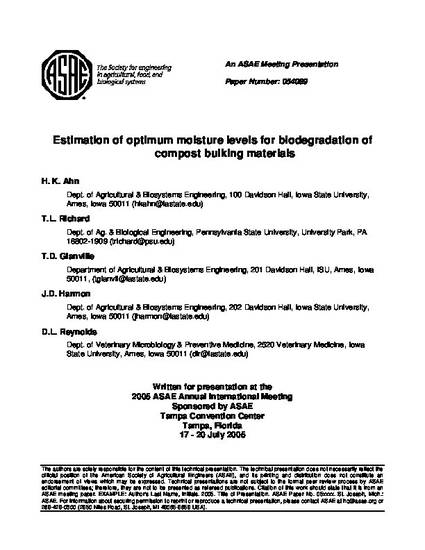
Moisture affects the physical and biological properties of compost and other solid state fermentation matrices. Aerobic microbial systems experience different respiration rates (oxygen uptake and CO2 evolution) as a function of moisture content and material type. In this study the microbial respiration rates of 13 compost-bulking materials were measured by a pressure sensor method at 6 different moisture levels. The experimentally determined respiration quotient (RQ) values were used to calculate CO2 respiration rates from O2 consumption. The RQ values of all materials were around 1.0 except for silage, oat straw and leaves which were about 1.5. A wide range of respiration and heat production rates were observed for different materials, with alfalfa hay, silage, oat straw, and turkey litter having the highest values. These four compost-bulking agents may be particularly suitable for improving internal temperature and pathogen destruction rates for disease-related mortality composting. Optimum moisture content was determined based on measurements across a range that spans the maximum respiration rate. A mechanistic model of moisture kinetics was also used to predict the optimum moisture levels. There was good agreement between experimental observations and modeled optimum moisture content. The optimum moisture content of each material was observed near WHC, which ranged from near 65 to over 85% on a wet basis for all materials except a highly stabilized yard waste compost (optimum around 30% w.b.). This study demonstrates the importance of moisture content on the biodegradability of organic materials and specific respiration rates of each material. The results can be used to develop moisture management and process control strategies to maintain compost and cover materials in an acceptable range.
Available at: http://works.bepress.com/thomas_glanville/41/

This is an ASAE Meeting Presentation, Paper No. 054089.